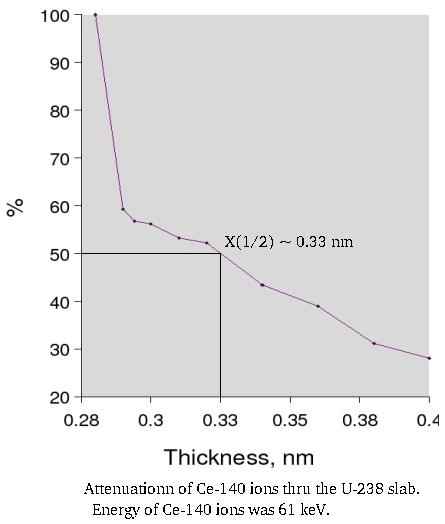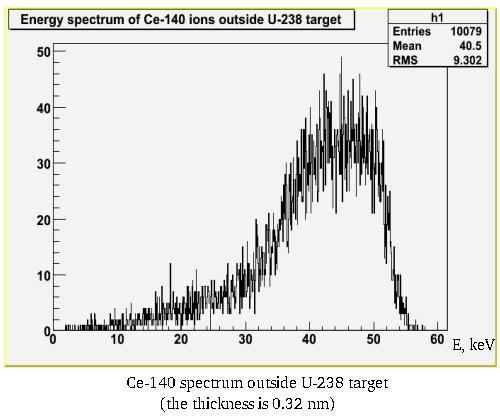Difference between revisions of "July, 6, 2007 Investigations of Geometry Influence on the Fission Fragments Behaviour"
Jump to navigation
Jump to search
| Line 30: | Line 30: | ||
Time = <math>3.3*10^{-17} s</math> | Time = <math>3.3*10^{-17} s</math> | ||
| − | (ii) Energy spectrum of Ce-140 ions (E=61 keV): | + | (ii) Energy spectrum of Ce-140 ions (E = 61 keV): |
[[Image:Energy_sp_Ce.jpg]] | [[Image:Energy_sp_Ce.jpg]] | ||
Revision as of 00:12, 9 July 2007
1. Theoretical Calculations
Relativistic charged particles lose energy in matter primarily by ionization. The mean rate of energy loss is given by the Bethe_Bloch equation,
- =K[ - - ]
= 0.307075 MeV
=61 keV
=0.033
For example, for incident particle Ce-140 and target U-238, we have following results for energy loss
Density of Uranium is 19.1 [1]
- = = 2.66
The half length is the distance needed to reduce the intensity in half
= nm = 0.0115 nm
Time t= = nsec
2. Simulation
(i) Simulated half-length for totally ionized unexited Ce-140 (A=140, Z=58, Q=58, E'=0) having energy 61 keV propagated thru the U-238 target:
Half-length:
Time needed to the Ce-140 ion to pass half-length:
Time =
(ii) Energy spectrum of Ce-140 ions (E = 61 keV):

